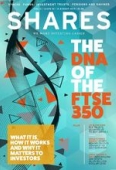Archived article
Please note that tax, investment, pension and ISA rules can change and the information and any views contained in this article may now be inaccurate.
How to play emerging markets through ETFs

Some people believe emerging markets have the potential for significant returns.
As development in these markets emerges, the opportunity for growth should in theory be better than a market that is already developed. However, this can also come with significant volatility attached.
And EM, as it’s also known, is a big, broad area covering a lot of different countries in the world. Picking a fund that covers the lot can protect you from the downside risks, but also mean missing out on opportunities in certain areas.
A low-cost and straightforward way to get diversified emerging markets exposure is through exchange-traded funds (ETFs), which track a broad index of companies in a wide range of EM countries.
For those just wanting to gain exposure to EM as a whole, this could be a useful option. While EM ETFs are more expensive than FTSE 100 trackers for example, they are still significantly cheaper than active funds.
AJ Bell’s head of passive portfolios, Matt Brennan, highlights the iShares Core MSCI EM IMI ETF (EMIM), and X MSCI Emerging Markets ETF 1C (XMMS), which are the cheapest options with both having a total expense ratio of 0.18%.
Typically emerging market ETFs cost more than FTSE 100 or S&P 500 ones for example, averaging out at a total expense ratio of around 0.5% a year.
Brennan explains, ‘The cost of holding EM companies is higher, custody costs are around 0.2 to 0.3% a year, that’s why EM ETFs are more expensive. Also, the tax regime is much more complex in these countries.
‘But on the flip side, from an underlying perspective growth is expected to be much higher compared to developed markets.’
Growth is not created equally however, and certain sectors and countries will do better than others.
Using financial markets as an example, Brennan adds, ‘EM financials make up 8% of the global sector, but financials makes up 23% of the global economy, so you can expect that gap to close. As those markets develop, the costs (of buying into those stocks) will go up, but that would be outstripped by performance.’
It is important to note this area of the market wasn’t good to investors last year with lacklustre returns across the board the stronger dollar is helping the US to outperform in comparison.
Brennan suggests now is ‘perhaps not a bad entry point’ to invest in emerging markets. So with that in mind, here are a number of ways to invest in emerging markets through ETFs.
THEME BASED OPTIONS
EMQQ Emerging Markets Internet & Ecommerce ETF (EMQQ)
The most focused way to play emerging markets that’s currently available to investors in the UK would be through the EMQQ Emerging Markets Internet & Ecommerce ETF.
The fund tracks an index of internet and ecommerce companies that serve emerging markets, such as online retailers, social networks and e-payment systems. The aim is to provide exposure to the growth of online consumption in the developing world.
To be included, companies have to derive more than half of their profits from ecommerce or internet activities. The ETF holds companies such as Tencent and Alibaba.
In a white paper, the ETF’s founder Kevin T. Carter says that any investor looking at EM knows ‘the key growth story in the developing world is the emergence of the middle class consumer’.
He cites a report from McKinsey & Co which concluded, ‘By 2025, annual consumption in emerging markets will reach $30tn – the biggest growth opportunity in the history of capitalism.’
iShares MSCI EM Consumer Growth ETF (IEMG)
Another way to play to that growth of the middle class consumer in emerging markets, this iShares ETF tracks companies which derive high or growing revenues from emerging markets countries. Like the EMQQ fund, its top holdings are Tencent and Alibaba, but it also contains companies such as Netflix and Nike.
Demand for legit Nike trainers in countries like China – which has a big basketball culture – for example is rapidly growing as people earn more money, while Netflix has identified the likes of Brazil and India as big growth areas.
NON-EQUITY OPTIONS
Vanguard USD EM Govt Bond ETF (VEMT)
Most emerging market ETFs are focused on shares in companies, but a potentially less volatile – though still broad – way to play the region could be through government bonds.
Called emerging market sovereigns, the asset class had a bad 2018, but those losses were wiped out by the end of January and returns have continued to rise. So far this year, the Vanguard ETF has returned 15.67%, compared to a total return last year of 2.78%.
The cheapest way to do this is via Vanguard’s ETF, which costs 0.25% and has a lower volatility than the benchmark index that it tracks.
COUNTRY-BASED ALTERNATIVES
Pictet-India Index (B96TPQ4)
When it comes to emerging markets, not all countries are created equal. After all, what happens in the likes of Brazil and Argentina is very different to what happens in places like Thailand and South Korea.
On the latter, which is included in the MSCI EM index and therefore in a lot of ETFs, there’s big debate about whether it should be considered an emerging market at all given how developed it is.
According to research firm Oxford Economics, India, the Philippines and Indonesia are the top three countries in emerging markets with the best growth potential. All three have individual ETFs which track their performance.
Out of all of them, India is ranked as the country with the best growth prospects, and also has the highest number of ETFs available.
The cheapest option is Pictet-India Index, which has an ongoing charge of 0.46%. Though not an ETF, like ETFs it simply tracks an index, and it follows the same index as other India equity ETFs which charge almost double the price.
Important information:
These articles are provided by Shares magazine which is published by AJ Bell Media, a part of AJ Bell. Shares is not written by AJ Bell.
Shares is provided for your general information and use and is not a personal recommendation to invest. It is not intended to be relied upon by you in making or not making any investment decisions. The investments referred to in these articles will not be suitable for all investors. If in doubt please seek appropriate independent financial advice.
Investors acting on the information in these articles do so at their own risk and AJ Bell Media and its staff do not accept liability for losses suffered by investors as a result of their investment decisions.

 magazine
magazine








